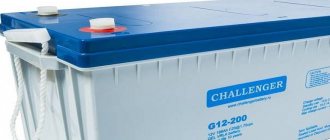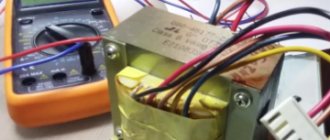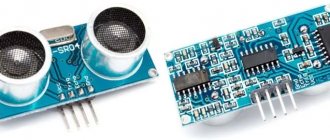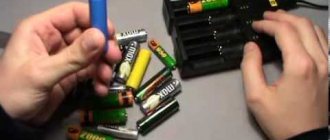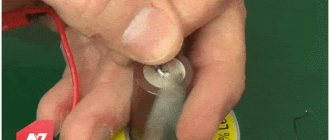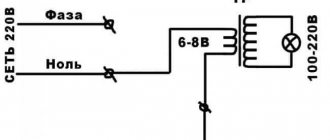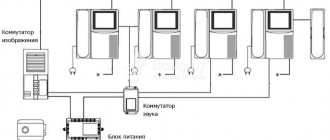Motorists quite often encounter situations when the battery is severely discharged and its charge is no longer enough to start the engine.
Usually in such situations there is only one way out. This means removing the battery, putting it on charge, and then returning to the usual operating mode.
But it also happens that when the battery is discharged, it is no longer possible to restore it. The battery does not react in any way when connected to a charger, and when started from a ROM or booster, the generator does not provide charging.
Here you need to know what deep discharge is, why it is dangerous, and how to resuscitate the battery.
Why you shouldn’t let your battery reach a deep discharge state
Battery discharge is a completely natural and normal phenomenon. After all, batteries are designed to accumulate energy, release it, and then accumulate it again. And so it goes cyclically. That is, batteries are multi-chargers. There is no need to change the battery every time it loses its charge. After all, she makes up for it.
But the design of modern batteries is far from perfect. It has a number of problems and requirements:
- Recharging is not allowed, as this provokes shedding of the plates;
- It is extremely undesirable to let the battery become deeply discharged;
- It is always important to maintain the correct electrolyte density;
- the working fluid must be at a stable level;
- avoid shorting cans, etc.
How long the battery can last if a car battery is deeply discharged largely depends on the battery itself, its current condition and the efficiency of resuscitation actions.
Before you find out what to do in such a situation, it is necessary to clarify the reason for such a high danger of a deep (complete) discharge of the starter battery.
Acid batteries contain an electrolyte that has a certain density. The electrolyte is presented in the form of a mixture of sulfuric acid and distilled water.
As the battery discharges, acid gradually begins to settle on the positive lead plates in the form of salt. And the stronger the discharge, the more active and voluminous these deposits are. The density drops, significantly different from the norm.
The optimal density indicator is considered to be 1.27 g/cm³.
A deep discharge can be described as the minimum threshold for battery discharge, below which there is simply nowhere to go. If the battery is set to zero, a chemical process takes place inside, stimulating the deposition of salts on surfaces. To remove deposits, you must connect the battery to a charger as soon as possible. Or let it start charging from the car's generator.
Thus, the density is normalized, the salt crystals are destroyed, and the battery’s performance is restored.
It would seem that with a deep discharge, you can simply connect the battery to the charger, and everything will return to normal. This is a common misconception.
At zero charge, the density of the salts increases so much that upon subsequent charging they are no longer destroyed, but are firmly deposited on the surfaces of the plates.
That is, the lead plate is almost completely covered with a solid salt layer. And since the battery is charged due to the interaction of lead and electrolyte, in such a situation the battery will no longer be charged.
Such a battery is no longer capable of accumulating a charge.
With each deep discharge, the battery loses 2-3% of its capacity, which can no longer be restored.
Because of this, when the battery experiences about 10 full discharges, it is no longer possible to count on 30% capacity. With such losses, the accumulated charge is not enough to start the engine.
A discharge of up to 10.5–11 V is considered deep. It is this threshold that is considered critical when the sulfation process actively begins to occur. That is, a precipitate in the form of salt crystals begins to appear.
Causes of failure of acid batteries
An acid battery is a dynamic system where electrochemical reactions constantly occur. They are accompanied by the release of energy transferred to consumer devices. The internal components of the battery wear out over time. Along with the useful ones, reactions occur that contribute to the degradation of the battery.
The device becomes unusable due to the following factors:
- Sulfation. A light layer of lead sulfate is deposited on the electrodes. This coating prevents charge build-up.
- Deformation of lead plates or carbon matrix. The mass crumbles to the bottom, the electrolyte loses its properties, and the release of energy stops.
- Short circuit of cans, electrodes and housing. Occurs due to mechanical stress. The same factor contributes to damage to the hull.
- Freezing or overheating of the acid filler.
Causes of battery failures.
Is resuscitation possible?
It is potentially possible to reanimate a battery that has suffered a really deep discharge and continue its operation for the benefit of the car.
For this purpose, various methods and instruments are used.
Much depends on how severe the discharge was, how long the battery was in this state, and how many complete discharges the power source experienced before.
Deep discharge is destructive specifically for lead-acid batteries, where liquid electrolyte is used as the working medium.
Manufacturers usually indicate in the technical documentation the number of deep discharges that a particular liquid lead-acid starter battery can survive.
Typically figures appear in the range of 15–20 cycles. But in reality, even 10 cycles are enough for the battery to no longer perform its functions in winter.
Therefore, the advice is extremely simple.
Try to avoid deep discharges. Each of them leads to a loss of 3% of capacity, which cannot be restored.
And there are also batteries that are not at all afraid of such situations.
Which batteries are appropriate to refurbish?
Restoring a car battery may be useless if, during operation, they were subjected to serious mechanical stress, leading to irreversible consequences such as destruction of the plates or cracking of the case. Repeated high current loads can also “kill” the battery beyond repair. It makes no sense to begin resuscitation operations if the plates have fallen off, if there has been an internal short circuit, if the battery is swollen - in such cases, the only justified procedure would be to scrap the battery.
Which batteries are not afraid of deep discharge?
Currently, we can distinguish car batteries that really are not afraid of a possible deep discharge. If we talk about what exactly these “fearless” batteries are, then attention is focused on GEL and AGM technologies.
It is in their case that the loss of charge will not be critical, and after charging the batteries they will be able to function normally for many more years.
These batteries are not afraid of discharge, since the electrolyte is not used in a liquid aggregate state, but in the form of a gel (GEL), or in the form of a liquid sealed in fiberglass mats.
It is because of this that salts practically cannot settle on the surfaces of the plates. But even here it was not possible to completely get rid of possible sulfation. It’s just that the number of charge-discharge cycles in which sulfation actually makes itself felt has been increased several times.
Signs of wear
To understand that the battery will soon fail, you need to have some information - find out the main signs. Without the necessary knowledge, restoring car batteries will be difficult. You will need to carefully monitor your car. Only in this case will it be possible to take the necessary repair measures, in particular the battery, in a timely manner.
There are several main signs:
- If the battery quickly loses its charge, then you need to worry. This is the first sign of a decrease in the quality of the electrolyte poured inside.
- Another sure sign of a battery malfunction is very fast charging through a special device. The reason for this will be sulfation, which has already begun.
- The electrolyte has darkened. If the substance begins to darken, then it is necessary to immediately begin restoring the battery, because this is one of the main signs that the carbon plates are beginning to crumble and deteriorate.
- If individual sections of the battery heat up or the electrolyte boils, this is due to the plates being shorted or damaged. The main reason for this malfunction is that the car sits idle for a long time in extreme cold. The plates may freeze and the body of the device may become covered with ice. As a result, a short circuit will appear, which, in turn, will lead to very rapid boiling when charging the electrolyte. This malfunction is already very serious, and in most cases it will not be possible to resurrect the device.
The battery can be restored in almost all cases if it is completely neglected. The operation can be quite expensive, but the money will be spent much less than when purchasing a new unit.
You need to be careful when using the battery and immediately notice various problems. The life expectancy of the battery will depend on this. Before you begin to directly restore the car, you need to find out which parts of the battery are generally subject to resuscitation.
Electrolyte density
The electrolyte is poured into the battery .
Usually this substance is a kind of cocktail of acid and water. If the battery is nickel-cadmium or nickel-iron, then in this case an alkaline electrolyte is poured inside. We recommend: Searching and selecting a battery by car make and model Before you start repairing a battery, you need to know exactly the density of the electrolyte. To do this, use a device called a hydrometer. You don’t have to spend a lot of money to buy it; it is sold in absolutely any auto parts store. You can also use a voltmeter to measure the density of the acid solution. The equipment must be turned off to the vehicle terminals.
When turned off, the numbers should be approximately 11.9-12.5 V. After this, turn on the car, pick up 2500 revolutions and take the measurement again. If the voltage is 13.9-14.4 volts, then the density is within normal limits. In this case, the old battery only needs to be recharged. But if the indicators are too low, a restoration will be required.
Several ways to perform resuscitation:
- Using a battery charger and bringing the charge to 100%. You can't lose charge.
- Complete replacement of the battery solution with a new one.
- Use of high-density electrolyte.
- Adding only sulfuric acid.
- Adding only water.
Before restoring the acid solution, it is worth trying to simply recharge the equipment. Sometimes it happens that after such a simple procedure all problems disappear.
If problems with the electrolyte appear after charging, then it is necessary to change the density of the solution in the battery.
Under no circumstances should water be poured into sulfuric acid . It is very important. Otherwise, you can get very serious skin damage in the form of burns. The water will boil and splash out in different directions. Restoring a car battery must be done carefully.
Destruction and short circuits of plates
If the plates on the battery have broken down or are just beginning to break down, then it is necessary to immediately take restoration measures. If the battery is significantly damaged, then it will no longer be possible to restore its parts.
That is why before resuscitation, you need to make sure that this is not a useless exercise. The process of destruction can only be stopped if it has just begun. There is no point in reviving a fairly battered device.
If you find signs of destruction, you should immediately wash the jars:
- First, you need to completely discharge the device by connecting any load to the battery. For this purpose, a regular light bulb is usually used.
- All damaged solution is removed from the jars. To do this, use a rubber bulb. The solution is placed in a glass container that has been previously prepared.
- The jars are washed with distilled water until completely clean. When cleaning the battery, it is necessary to constantly turn it over and shake it.
- If there is a lot of dirt inside, and coal crumbs are still pouring out, then the process is already irreversible, since it has gone far. In this case, the battery can no longer be restored.
- When complete cleanliness has been achieved, a new solution must be placed in the jar. Before this, the density of the substance must be checked.
- The battery is charged so that the previous voltage returns to the desired level.
When the cleaning operation is completed and the device is fully charged, you need to check the electrolyte and its density again. If necessary, the indicators will have to be brought back to normal.
Diagnostics of sulfation
Sulfation is one of the most common battery problems. Under normal operating conditions, certain processes occur in the battery during discharging and charging. But when the car starts infrequently, the processes will be disrupted.
We recommend: How to properly change the battery in a car
Lead sulfate crystals may appear on the plates. They are difficult to remove and can lead to the following consequences:
- Battery capacity decreases.
- Internal resistance increases.
- The volume of the plates increases.
In most cases, sulfation begins to appear if the car sits for a long time without use, overheats, or is exposed to critical current conditions. You can understand that sulfation has begun by seeing a drop in charge.
To determine this indicator, you need to use a tester. If a defect is found, you need to think about ways to restore the battery in the near future. You need to act quickly while the device still has the opportunity to be restored. To restore it, it is necessary to use a special electrolyte additive. A desulfator is usually used to dissolve the crystals that have formed. These were the main problems. After studying them, you can learn how to reanimate a car battery at home.
Recovery methods
Now let’s get straight to the question of what to do if your car battery is deeply discharged.
First of all, it is important to understand that sulfation, that is, the process of formation of deposits on the plates, occurs not only in the case of a complete discharge. Sulfation is less active, but still occurs if the battery is in a half-discharged state. Because of this, it is extremely important to maintain the voltage at 12.7 V, and the density not to drop below 1.27 g/cm³.
If complete discharge could not be avoided, you need to choose a way to charge your car’s battery after a potentially disastrous deep discharge.
In total, there are several options for how to remove the battery from such a state, which was caused by severe discharge:
- mechanical cleaning;
- chemical reduction;
- KTC;
- using distilled water;
- polarity reversal;
- using a desulfator.
Each resuscitation option deserves special attention.
Mechanical cleaning
Some motorists have the idea, after a deep discharge of a battery that cannot be charged, to try to clean the battery from the car physically.
The point of the method is to drain the electrolyte, cut out the elements of the plastic case and remove the affected plates from the battery.
Next, all the plates and the cavities between them are washed with distilled water and cleaned with special compounds. Then all that remains is to restore the seal of the case, fill in fresh electrolyte and charge the battery.
The plates are very sensitive and therefore require extremely careful handling. Because of this, it is very difficult to restore the battery by physical cleaning.
There are craftsmen who managed to cut the body and assemble it. But exactly how the battery will behave after this is a mystery.
Available ways to restore a car battery
So, besides desulfating the battery plates using a charger, there are other solutions. Let us note right away that such methods cannot be considered the best option, but in some situations they can be used.
For example, if mechanical cleaning of plates from lead sulfate requires disassembling the battery, removing the plates and cleaning them, then chemical cleaning eliminates the need to disassemble the battery. To do this cleaning, just open the lids on the jars, pour in the cleaning solution and wait until it washes away the salt on the plates.
Of course, such methods are difficult to implement and even dangerous (working with batteries and acid requires compliance with safety rules). However, if the battery is fully serviced and the electrolyte is replaced, desulfation can also be carried out as part of such work.
As for ordinary car enthusiasts, in practice, not everyone will provide comprehensive battery maintenance. In this case, it is much easier to purchase a battery charger with a desulfation mode or a separate device for desulfation of battery plates. Taking into account the fact that the second option is not suitable for everyone, below we will consider the method of desulfation with a conventional charger.
Features of lead-acid batteries
This variety has been used for a long time and is time-tested. Even today, the lead battery, whether for a flashlight or a car, is receiving improvements and modernization. Here are his positive qualities:
- low level of self-discharge;
- undemanding to maintenance;
- no memory effect;
- if necessary, produces greater current output;
- affordable because it is easy to manufacture.
But it was not without its drawbacks:
- cannot be stored unloaded;
- sensitive to negative temperatures;
- small capacity (relative to weight);
- does not tolerate deep discharge well;
- environmentally hazardous (lead compounds).
A lead-acid battery consists of the following main elements:
Battery device.
- electrodes: lead grids with lead dioxide in cells;
- separation plates that do not react chemically with acid;
- electrolyte where the grids are immersed;
- housings.
In the 1970s, a new technology for producing lead batteries appeared - AGM (Absorbent Glass Mat). In the power source, instead of the usual liquid electrolyte, it is absorbed. Such batteries: are sealed, do not require maintenance, serve for a long time if properly charged, tolerate cold well, charge 2-3 times faster and have a self-discharge even lower than in classic batteries.
“80 percent of drivers bring simply dead batteries”
In certified service centers, no one will wash customers’ batteries with soda, water or other liquids, nor will they change the electrolyte. Firstly, this is not recommended by manufacturers, who fill it for its entire service life and only allow distilled water to be added to it, if the battery is serviceable. Secondly, it is harmful to health, since in the process a person will breathe acid fumes and deal with caustic chemicals, the handling of which requires great care.
But the most important argument of experts is the pointlessness of the work done, since sulfates can be gotten rid of in a modern and safe way in a charging cabinet, and soda will not correct damaged plates or manufacturing defects. On the contrary, turning the battery over to drain the electrolyte can lead to a short circuit, after which it is guaranteed to fail.
“In winter, we have more requests, and 80 percent of our customers simply bring discharged batteries, thinking that there is something wrong with them,” says Anatoly, a service employee . “Because they think the problem is with the battery itself, many people simply buy a new battery.”
Experts cite short trips and car malfunctions as the reasons why the battery is discharged. But the worst thing is when the battery is used in this mode for a long time.
“The electrolyte density is 1.22 grams per cubic centimeter - in warm weather this is unnoticeable, the person continues to drive. As a result, the active mass sheds, the capacity becomes smaller, but the owner notices this closer to winter, when problems with starting begin. This process is irreversible, so you have to buy a new battery.”
We ask a specialist whether it is possible to independently determine whether the battery has “died” completely or whether it can still be revived.
“Some assumptions can be made if you know how the battery was used. For example, the batteries of cars arriving from America are often discharged; their performance can often be restored by charging in desulfation mode. The exact condition can only be determined by measuring the density of the electrolyte and the voltage with a load fork. Outwardly, without instruments, you won’t be able to understand anything: even if you unscrew the lids, you won’t see the destroyed plates, the sediment is at the bottom, but if you lift it from the bottom with a hydrometer, the electrolyte will become black and cloudy.”
In order for the battery to serve its intended 5 years, experts advise periodically monitoring the density of the electrolyte, recharging the battery with a charger and installing a battery of the required type and capacity in the car, for example, do not install a regular “acid tank” where the AGM should be.
“There used to be a practice when the battery was brought home in cold weather. In theory, if your battery is more than 4-5 years old and the electronics allow you to remove it without errors, this can be done. And a new and charged battery will survive even 30-degree frost without any problems.”
Battery Maintenance
As you can see, there are several answers to the question “how to reanimate a battery.” But in conclusion of the article, we would like to give not just another piece of advice on how to revive an old battery with your own hands, but recommendations on how to maintain your battery. By following these simple rules, you will significantly extend the life of your battery, and, most likely, you will not have to resort to the advice from our article.
So, what does battery maintenance include:
- Periodically clean the battery from dirt, electrolyte residues and oil.
- Secure the battery carefully.
- Check the cleanliness of the gas outlets and clean them if necessary.
- Clean terminals and wire ends.
- Monitor the electrolyte level in the battery and periodically check its density.
There is nothing complicated about battery maintenance. But these simple rules will keep the “electric heart” of your car healthy for a long time, and we hope you will never need battery resuscitation!
